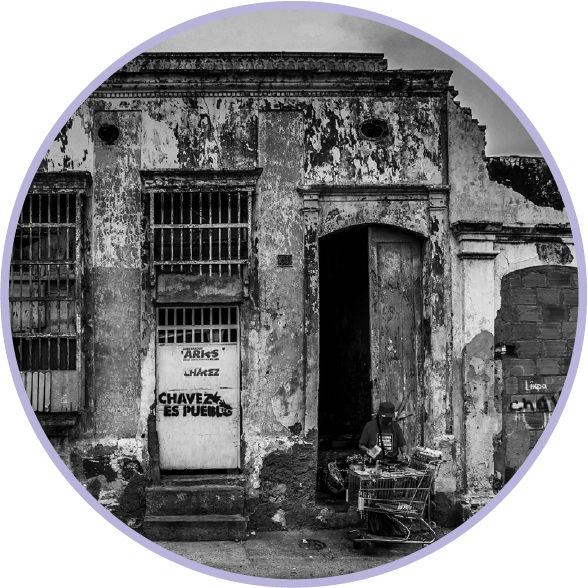A New Pink Tide in Latin America?
by Michael Coleman
As recently as 2019, the Latin American left was thought to be at a historically low ebb. Following the elation of the Pink Tide, which had propelled a loosely associated collection of left and centre-left electoral movements into power in the previous decade, the party very much seemed to be over. Many of these governments had run aground and been replaced by the forces of reaction, ranging from neoliberals like Mauricio Macri in Argentina to outright fascists like Jair Bolsonaro in Brazil. In Ecuador, the leftist PAIS Alliance managed to hold onto electoral power, but Pink Tide leader Rafael Correa suffered the indignity of being forced into exile by his hand-picked successor Lenín Moreno and had to watch as most of his government’s achievements were undone in the space of a few years. Things also didn’t look great where the left still maintained power. Venezuela, perhaps the single biggest cause celebre of the Pink Tide, had been battered by years of economic turbulence, and many international governments had officially recognised opposition figure Juan Guaido as head of state rather than Hugo Chavez’ successor, Nicolas Maduro. What looked like the terminal blow, however, came in Bolivia, when fabricated allegations of electoral fraud against the MAS (Movement For Socialism) facilitated a US-backed coup which forced Evo Morales into exile and installed a reactionary regime in his stead.
The last year in the region has, however, shown some rare-in-2020 signs of encouragement for the left. The inspirational resurgence of MAS in Bolivia and electoral defeat of the forces of reaction there, along with encouraging developments elsewhere, means that once again the international socialist movement looks toward Latin America with hope. Whilst it is too early to say that the Pink Tide is back, what is for sure is that Latin America, much like the rest of the world, is currently at an inflection point. It is therefore a perfect time to take stock and observe what lessons we can learn from the Pink Tide, its fall, and its (potential) resurgence.
A History of US Imperialism
Dating back to the Monroe Doctrine of 1823, the US has, in effect, viewed Latin America as its playground and a place where it ought to be free to interfere based on a whim. It is beyond the scope of this article to discuss the extensive history of this interference, but suffice to say that in the 20th Century a confluence of this tendency, cold war paranoia and the legacy of settler colonialism and white supremacy in Latin America itself had combined to create a particularly virulent and reactionary strain of anti-communism backed by the force of US arms, covertly or otherwise. The result of this was not only the overthrow of numerous democratically elected governments, the replacement of Salvador Allende with Augusto Pinochet’s proto-neoliberal dictatorship in Chile being perhaps the most notorious example, but also vicious campaigns of violence, torture and murder. These campaigns targeted socialists, trade unionists and dissidents of all stripes and were always tinged by anti-indigenous racism. As Vincent Bevins documents in his excellent book The Jakarta Method, in Guatemala alone the US-backed right-wing dictatorship wiped out entire indigenous communities, leaving tens-of-thousands dead, because they felt their communal style of living was too close to communism to be allowed to continue. It is necessary to understand this in order to comprehend what made the Pink Tide such a significant moment, and why the starting point for any analysis here should be solidarity with the Latin American left. These are the background conditions that have stalked every move of the Pink Tide governments and movements. Recent history tells them that miscalculation and failure may not just mean losing power, it may well mean death, brutal revenge being wrought on the left and indigenous communities, and even extermination. The fact that they accomplished what they did facing this threat down is a considerable achievement.
The Pink Tide
Article originally published in Rupture, Ireland’s ecosocialist quarterly. Subscribe here:
The Pink Tide is generally thought to have begun with the election of Hugo Chavez as President of Venezuela in 1998. It kicked off a string of electoral victories for left-of-centre movements in Latin America that lasted about a decade. The more radical and socialist edge of the Pink Tide was represented by Chavez, as well as Evo Morales in Bolivia and Rafael Correia in Ecuador, but it also included more moderate social democratic iterations, such as Lula Da Silva in Brazil, as well as a resurgence of the more difficult to define Peronist populism in Argentina. None of the governments moved beyond capitalism or achieved socialism as such, but in the context of a continent ravaged by decades of under-development and US imperialism, this would probably always have been an unlikely outcome. What these movements did try to do was to attempt to resist and reverse the effects of decades of neoliberal policies imposed on the people of Latin America. A common theme that united the more moderate and radical instantiations of the Pink Tide was the use of mass social programmes to fight poverty. Perhaps the single biggest legacy of Lula Da Silva’s Workers’ Party government in Brazil was the introduction of the Bolsa Familia scheme, which has proven incredibly effective in reducing poverty. As recently as 2017, and even amidst the general rollback of Lula’s progressive achievements this decade, according to the International Policy Centre for Inclusive Growth, the Bolsa Familia reduced the number of people living in poverty by 15% and in extreme poverty by 25%. Similarly, in Bolivia, social programmes introduced by MAS saw poverty nearly halved between 2005 and 2018, with Venezuela under Chavez seeing similar results under its social programmes up until the commodities crash of the last decade.
This points to some problems with the economic model of many Pink Tide governments. They all relied on extraction of natural resources to varying degrees, whether this was oil in Venezuela or lithium in Bolivia. This was problematic because it left many of them especially vulnerable to the vagaries of the commodities market, as Venezuela has so tragically discovered in recent years, but it ought also troubles us as ecosocialists to see left-wing governments feel they have no alternative but to build their social and economic achievements upon extractivist foundations. Given the under-development and lack of diversification in many Latin American economies, this remains a live question going forward and, should a new generation of Pink Tide governments take power, finding an alternative economic model may well be their biggest challenge.
The Tide’s Ebb and Flow
Most of the 2010s saw the Pink Tide recede, many thought permanently. A combination of economic shocks caused by the aforementioned commodities crash, an inability to get to grips with corruption and the stubborn perseverance of reactionary and/or bourgeois forces in the region left many Pink Tide governments and their achievements especially vulnerable. What followed was the electoral defeat of many of these movements, often supplemented by a method that became known as ‘lawfare’. A new technology in the history of underhanded manoeuvres pulled off against the Latin American left, this refers to a coordinated abuse of legality toward political ends by the opponents of the Pink Tide. It was by this process that Dilma Roussef was removed in Brazil, and by which Lula Da Silva was banned from running and jailed in 2018 when all indicators suggested he was the only candidate who would have beaten Bolsonaro. A similar approach saw Rafael Correa exiled and banned from running in this year’s election in Ecuador. The upshot of this was a return to the policies of neoliberalism across the continent, as well as an atmosphere of fear for the left, indigenous people, the LGBT community and anybody else perceived as a dissident.
It was where lawfare was attempted but did not work that we began to see green shoots for the Latin American left. In Bolivia, numerous attempts were made to ban MAS from running in the elections that were promised after last year’s coup. Once it looked like their candidate Luis Arce might win, the coup regime attempted to repeatedly suspend the election. The fact that they were forced to eventually hold the election is entirely down to the power of the mass social movements that MAS had become integrated with in the last two decades. Mass demonstrations, led by indigenous people and the urban poor, eventually forced the regime to hold the election, paving the way for Arce to be elected in a landslide and allowing Evo Morales to return from exile. In a similar vein, in Venezuela, the rootedness of Chavismo in mass social movements played a huge role in allowing the Maduro regime to resist the imposition of Juan Guaido as president, despite the numerous difficulties that the country has faced in recent years. Meanwhile, in Brazil, Lula’s enduring popularity notwithstanding, the general consensus is that the Workers’ Party, once a vibrant and highly democratic organisation, was severed from its popular base through its years in government. It instead chose a strategy of deferring to economic elites which allowed them to achieve results in the short term, but ultimately left them vulnerable once those elites turned against them.
The importance of rootedness in social movements becomes all the more apparent when we view the new arenas of contestation for the Latin American left. In Chile, we have seen a mass popular movement succeed in repealing the Pinochet constitution which had in effect codified neoliberalism, opening up new frontiers for any potential left administration. In Peru, mass resistance to a perceived coup of popular President Martin Vizcarra saw the country move through three presidents in six days. Of the two, the uprising in Chile certainly has a more explicitly left-wing character, but in neither example is there yet an organised socialist left immediately ready to take advantage of these developing situations. Yet the incredible potential released by these events points to the truth that the left will achieve and maintain power through mass popular movements, or it won’t at all.
Conclusion
Despite the recent good news, it is still probably too early to declare that a return of the Pink Tide is nigh. Indeed many liberal media outlets have sought to pour cold water on such a prospect, with the Financial Times arguing that the setbacks conservative parties have faced have more to do with the mishandling of the Covid-19 crisis than anything else and that the continuing slump in the commodities market mitigates against anything resembling what happened in the 00s. This year will provide an early litmus test for the resurgent Latin American left, with elections in Ecuador, Peru and Chile. Indications are especially promising in Ecuador, where leftist candidate Andrés Arauz, a protégé of Rafael Correia, overcame attempts to ban his candidacy to win a clear victory in the first round of election. He now faces a runoff election on April 2nd which he appears very likely to win.
It may be that by the end of the year we will be able to declare with more confidence that the Pink Tide is back, but until then we can still learn much from the successes and failures of its first iteration.
Sources
BEVIN, V. (2020), The Jakarta Method, Hachette Book Group, New York
DE SOUZA, P.H.G.F, OSORIO, R.G., PAIVA, L.H. and SOARES, S. (2019), ‘The Effects of Brazil’s Bolsa Família Programme on Poverty and Inequality: An Assessment of the First 15 Years’, International Policy Centre for Inclusive Growth, https://ipcig.org/pub/eng/OP429_The_effects_of_Brazil_s_Bolsa_Familia_programme_on_poverty_and_inequality.pdf
ROGYATUK, D. (2019), ‘Building a Bolivia for the Next Generation: An Interview with Adriana Salvatierra’, Jacobin, https://www.jacobinmag.com/2019/10/bolivia-election-adriana-salvatierra-mas-evo-morales







